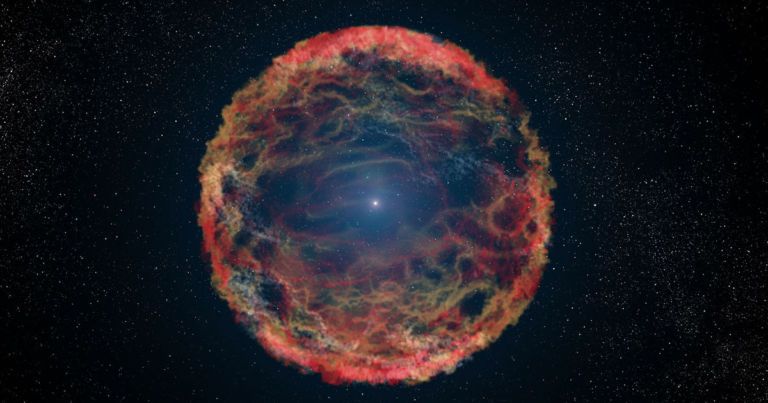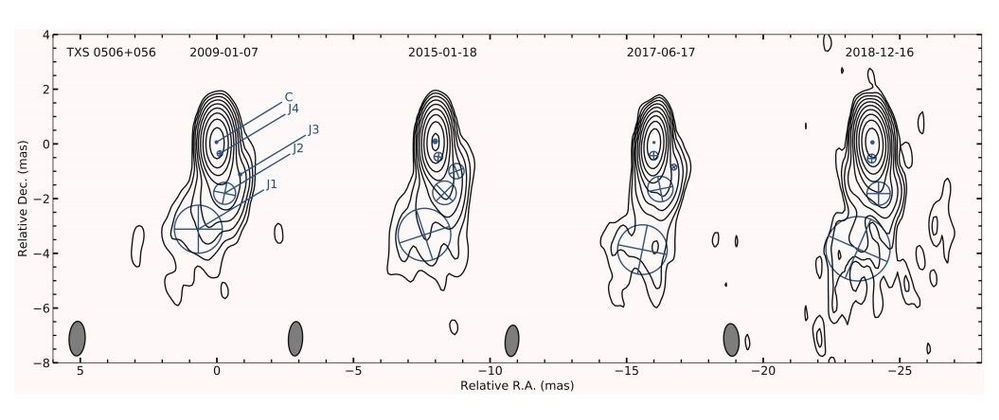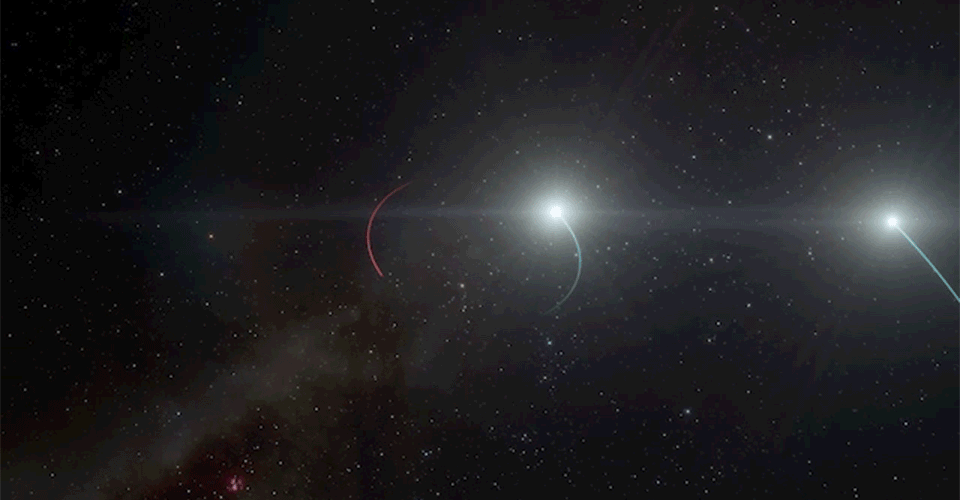It’s almost sadistic.



Using the Very Long Baseline Interferometry (VLBI) technique, astronomers have probed the parsec-scale jet of a neutrino-emitting blazar known as TXS 0506+056. Results of the new study, presented May 1 on arXiv.org, shed more light on the properties of this jet, which could improve the understanding of very-high energy (VHE) neutrinos.
Blazars, classified as members of a larger group of active galaxies that host active galactic nuclei (AGN), are powerful sources of emission across the electromagnetic spectrum from radio to very high-energy gamma frequencies. Their characteristic features are relativistic jets pointed almost exactly toward the Earth.
In general, blazars are perceived by astronomers as high-energy engines serving as natural laboratories to study particle acceleration, relativistic plasma processes, magnetic field dynamics and black hole physics. Therefore, high-resolution observations of blazars and their jets in different wavelengths could be essential for improving the understanding of these phenomena.
Education Saturday with Space Time.
Why is it that we can see these multiple histories play out on the quantum scale, and why do lose sight of them on our macroscopic scale? Many physicists believe that the answer lies in a process known as quantum decoherence.
Does conscious observation of a quantum system cause thefunction to collapse? The upshot is that more and more physicists think that consciousness – and even measurement – doesn’t directly causefunction collapse. In fact probably there IS no clear Heisenberg cut. The collapse itself may be an illusion, and the alternate histories that thefunction represents may continue forever. The question then becomes: why is it that we can see these multiple histories play out on the quantum scale, and why do lose sight of them on our macroscopic scale? Many physicists believe that the answer lies in a process known as quantum decoherence.


The U.S. space agency National Aeronautics Space Administration (NASA), European Space Agency (ESA), and Japan Aerospace Exploration Agency (JAXA) are inviting coders, entrepreneurs, scientists, designers, storytellers, makers, builders, artists, and technologists to participate in a virtual hackathon May 30–31 dedicated to putting open data to work in developing solutions to issues related to the COVID-19 pandemic.
During the global Space Apps COVID-19 Challenge, participants from around the world will create virtual teams that – during a 48-hour period – will use Earth observation data to propose solutions to COVID-19-related challenges ranging from studying the coronavirus that causes COVID-19 and its spread to the impact the disease is having on the Earth system. Registration for this challenge opens in mid-May.
“There’s a tremendous need for our collective ingenuity right now,” said Thomas Zurbuchen, associate administrator for NASA’s Science Mission Directorate. “I can’t imagine a more worthy focus than COVID-19 on which to direct the energy and enthusiasm from around the world with the Space Apps Challenge that always generates such amazing solutions.”
The unique capabilities of NASA and its partner space agencies in the areas of science and technology enable them to lend a hand during this global crisis. Since the start of the global outbreak, Earth science specialists from each agency have been exploring ways to use unique Earth observation data to aid understanding of the interplay of the Earth system – on global to local scales – with aspects of the COVID-19 outbreak, including, potentially, our ability to combat it. The hackathon will also examine the human and economic response to the virus.

Circa 2019
Special Relativity. It’s been the bane of space explorers, futurists and science fiction authors since Albert Einstein first proposed it in 1905. For those of us who dream of humans one-day becoming an interstellar species, this scientific fact is like a wet blanket.
Luckily, there are a few theoretical concepts that have been proposed that indicate that Faster-Than-Light (FTL) travel might still be possible someday.
A popular example is the idea of a wormhole: a speculative structure that links two distant points in space time that would enable interstellar space travel.

The closest black hole to the Earth has been discovered just 1,000 light years away — near enough to see its companion stars with the naked eye on a clear night.
Located in the constellation of Telescopium, the hole forms part of a so-called ‘triple system — one named ‘HR 6819’ — with its two accompanying stars.
The presence of a hidden black hole in HR 6819 was discovered by researchers from the European Southern Observatory (ESO)’s La Silla Observatory in Chile.
